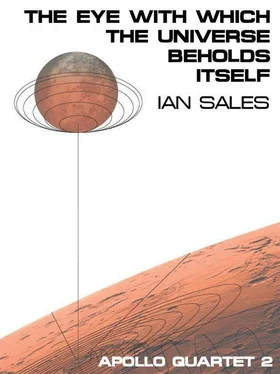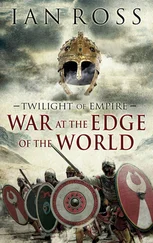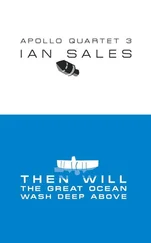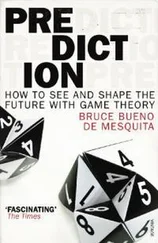Elliott has imagined the space programme would gradually wind down now that NASA has met its objective. And so it does for a couple of years. There’s still the flyby simulator, now dubbed “Skylab”, still in orbit and continually manned. It even has a space telescope fitted to it. But then there’s a flurry of activity, more Saturn Vs ordered, North American and Grumman with full order books, and Skylab is moved out to one of the Earth-Moon Lagrangian points. It’s used as a staging post to a Near-Earth Asteroid, which is captured and returned to L5. Elliott makes quiet enquiries about returning to NASA—this stuff sounds real interesting and he wants to be involved—but he’s firmly rebuffed.
Each year, Elliott is visited by agents from the NSA, who remind him of the consequences should he discuss the Cydonia Codex, which is what they’re calling the disc with the alien writing on it. Five years after the mission, they tell him scientists working at Area 51 have had a breakthrough and Elliott has done his country a service it can never repay.
In 1988, the President reveals the US has a manned base on an exoplanet and has been making secret test flights to nearby stars for four years. A NSA agent confirms to Elliott the faster than light engine came out of Area 51 and was based on the maths on the photos of the disc Elliott brought back from Mars.
Elliott is deeply disappointed at what he has missed. His achievement, landing on Mars, the only man ever to do so, feels as though it has been trivialised, as though the giant step he made has been rendered foolish and of no consequence.
Perhaps Pete Conrad felt the same on the day Elliott stepped down from the MM.
The interstellar test flights announcement results in a fight with Judy. She leaves him, and it is a week before he learns she has gone to Paris. She rents a small apartment in the 20th arrondissement, and does not return for two months.
In 1989, Bob Walker dies of cancer after a long, protracted illness. His doctors are unanimous in blaming the flight to Mars as the cause. Though Elliott undergoes regular checks, his health remains good. Whatever stray cosmic ray triggered cancer in Walker, it missed Elliott.
In 1993, Elliot is promoted to brigadier general and given command of the Air Force Flight Test Center at Edwards AFB. He and Judy settle in California for what they imagine will be the twilight of Elliott’s career. Humanity has visited the stars—thanks to Elliott, though he received no credit for it—and found the universe wanting. More than a decade after the first interstellar flight, there is still only a single US scientific station on an exoplanet, a world orbiting the star Gliese 876 fifteen light years from Earth. The universe has been revealed as a pitiless and hellish place, too dangerous and expensive and difficult to exploit—at least for the time-being, given current American technology.
Elliott’s mission to Mars is all but forgotten, mentioned only on PBS science programmes, public access shows about UFOs and the Face on Mars, or in nostalgic sci-fi novels. He has almost forgotten it himself; he is a career military officer now, and feels as though he always has been. The 130 days he spent in space, hurtling between the Earth and Mars, the nine days on the Martian surface, the 537-day return flight—they might never have happened.
He loves flying, he has always loved flying; and as commander of the Flight Test Center he gets to fly whatever and whenever he wants. But some days he sits at his desk and hears another muffled roar as somewhere in the distance a F-5E or a B-52 takes off, and he remembers sitting atop a Saturn V as far below him five F-1 rocket engines ignite, their basso profondo roar, their infernal power pushing him faster and faster and faster. He remembers days spent in an Apollo Command Module and a hab module made out of a S-IVB, he recalls the descent to Cydonia in the MM. He wishes he had been allowed to stay an astronaut, to perhaps work on the interstellar spacecraft USAF now operates.
And then one day, the phone on his desk rings and a voice tells him General Sheldrake P Williams, commander of Air Force Space Command, would like to speak to him. And the first question the general asks him is:
How’d you like to go back into space again?
It has been nearly twenty years since Elliott last experienced splashdown, though strictly speaking this is not a “splashdown” as Earth Two possesses no surface water. He is briefly amused that his first, Ares 3, was as pilot of a crew of three; for Ares 9 he was commander of a crew of two; and now he is on his own in the CM. He ignores the empty seats to either side of him, and gazes at the control panel as if he’s actually in command of this flight.
It’s a fierce ride. The air is thicker here and the atmosphere deeper. G-forces press him into his seat, he thinks maybe eight or nine G, and it’s an effort to remain silent under the strain. He’s still a physically fit man, he needs to stay in shape to fly high-performance jets, but this is hard work. He only remembers one time before when everything has been such an effort, and that was during his nine days on Mars. Streaks of flame, yellow and red, stream past out the window, and then it’s all white-hot enveloping fire. He watches the altimeter and tries to remember the numbers Finley gave him just before he left the Goddard. It doesn’t matter much—the AGC has been programmed for Earth Two landings, he’s just a passenger.
The CM rolls over 180 degrees on schedule and he knows he won’t be bounced off the atmosphere. The Gs start to drop and a great weight lifts from his chest. He pulls in a grateful breath. The spacecraft rolls this way and that, lining itself up for the landing. It’s freefalling now, and he glances at the Mission Timer and waits for the 16½-feet diameter drogue chutes to be released. A thump, and there they go. The CM jerks and slows and steadies. A long anticipatory moment of silence. Now the main chutes deploy with a bang, and the CM seems to slow until, slow seconds later, the reef lines are cut and the main chutes open to their full diameter of 83½ feet and it feels like he’s hit a brick wall. Elliott bites off a cry of pain. The spacecraft is still dropping, but slowly, and swinging ponderously from side to side.
Ten feet above the ground, the retro-engines—added for landings on the waterless exoplanet—fire and the CM settles with a roar and a thump on the surface of Earth Two. Elliott remains in his seat. He’s feeling weak from almost three weeks in zero gravity, and the G forces he experienced on the way down have near drained him.
After ten minutes, he feels recovered enough to attempt an exit. He unlocks and removes his helmet and then his IV gloves. He unbuckles his harness and pushes the straps from his torso. He’s lying on his back at about a thirty degree angle, so he hitches his rear back until he is sitting upright. Getting from there down into the Lower Equipment Bay without banging arms or knees on struts or lockers or control panel takes care. He nearly does it, but by the time he’s got his breathing mask on, and an oxygen bottle on a sling about his neck, he’s nursing a bruise on one shin. He clambers across to the hatch and yanks down the pump handle. There’s a hiss as gas is forced from the bottles, the gears grind, and the hatch pops open and swings wide.
Despite the mask, a smell of burnt earth and hot metal immediately fills the CM. Elliott finds himself short of breath and it takes an effort of will to slow and deepen his breathing. He scrambles out of the hatch and he’s standing on the surface of Earth Two and—
This is not Earth and it’s not Mars. He is in the middle of a plain of dark rocky soil. It looks almost purple. The sky is red, fading to black at the zenith, and the only light is a dim crimson that washes like blood over everything. On the horizon, he can make out a low range of hills, looking almost pink in the distance. The horizon itself strangely seems to curve slightly upwards.
Читать дальше












